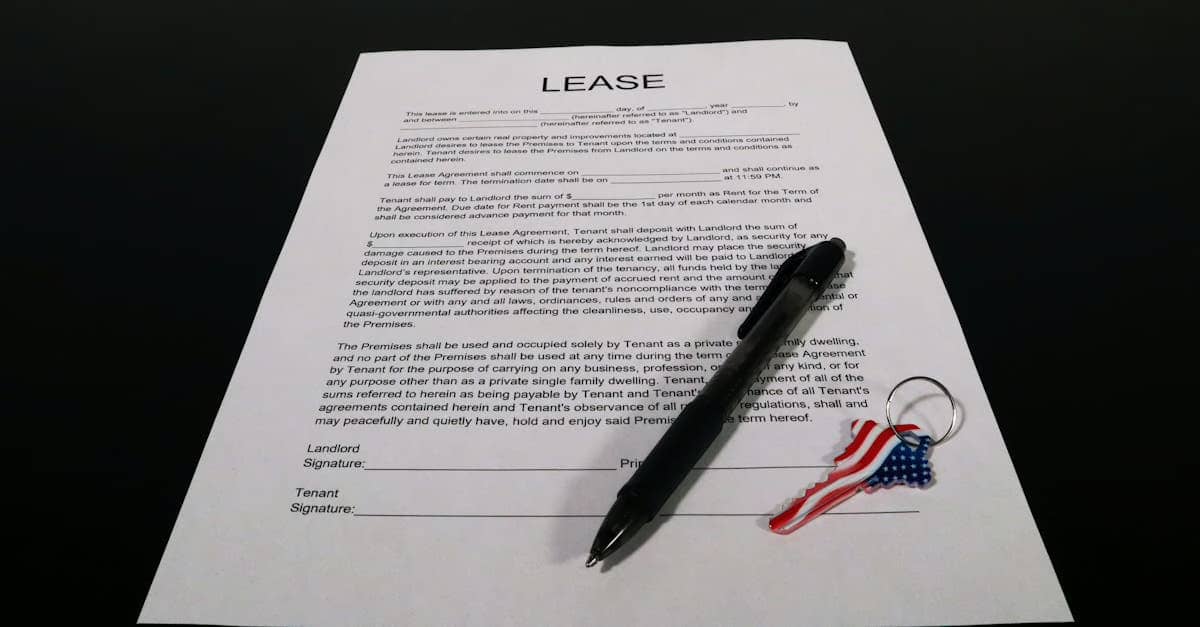Welcome, fellow navigators of the paperwork sea! Today, we’re diving deep into the often-dense, yet incredibly crucial, world of the lease agreement California. For anyone involved in California real estate rentals, from landlords and tenants to sharp transaction coordinators like us, understanding this document is paramount. It’s the blueprint for a successful tenancy, outlining the rights, responsibilities, and rules that everyone must follow. Ignoring the details here is like trying to build a house without plans – a definite no-go!
A standard California lease agreement serves as a legally binding contract between a landlord and a tenant, granting the tenant the right to occupy a rental property in exchange for rent payments. While state law provides a framework, various forms and stipulations can be added, making each lease unique yet rooted in common legal principles. Getting this document right is foundational to avoiding future disputes and ensuring a smooth landlord-tenant relationship.
Key Components of a California Lease Agreement
So, what makes up this vital document? Let’s break it down:
- Parties Involved: Clearly identifies the landlord(s) and tenant(s).
- Property Description: Precise address and details of the rental unit.
- Term of Tenancy: Specifies the lease duration (e.g., one year, month-to-month).
- Rent Amount and Payment Schedule: Total monthly rent, due date, accepted payment methods, and late fee policies (must comply with California limits).
- Security Deposit: Amount, conditions for return, and how it will be held (California law sets limits on the amount).
- Use of Property: Defines how the property can be used (e.g., residential only).
- Maintenance and Repairs: Outlines responsibilities for upkeep.
- Rules and Regulations: Covers items like pets, smoking, noise, and guest policies.
- Entry Rights: Specifies conditions under which a landlord may enter the property.
- Disclosures: Mandated state and local disclosures (e.g., lead paint, mold, Megan’s Law).
Understanding these sections within any lease agreement in California is your first step towards mastery. File that under ‘must read’!
TC Tips for Handling California Lease Agreements
As Transaction Coordinators, we are the maestros of organization and detail. Handling a California lease agreement requires precision. Here are a few tips:
- Verify All Parties are Listed and Signed: Sounds simple, but often missed. Ensure every adult occupant who should be on the lease is named and has signed the document.
- Check for All Required Disclosures: California has specific state and often local disclosures that must be provided to the tenant and acknowledged. Create a checklist to ensure none are missed.
- Confirm Dates and Amounts Match: Cross-reference the lease term dates, rent amounts, due dates, and security deposit figures with related documentation or instructions from the agent/landlord.
- Organize and File Meticulously: Keep digital and/or physical copies impeccably organized. A well-indexed file saves immense time if issues or questions arise later regarding the lease agreement California.
Why the California Lease Agreement Matters to TCs
Our role is to facilitate a smooth transaction and ensure compliance. The california lease agreement is central to rental transactions. Errors or omissions in this document can lead to legal headaches, disputes between parties, and potential liability for the agents and brokers involved. By ensuring the document is complete, accurately reflects the agreement, and includes all necessary components and disclosures, TCs play a vital role in mitigating risk and protecting everyone involved. It’s not just paperwork; it’s peace of mind.
Analysis & Insights
While standard forms exist, customization is common. Landlords often add addenda covering specific property rules or local ordinances. It’s crucial for TCs to recognize these additions and ensure they are properly incorporated and signed. Furthermore, staying updated on California rental laws, especially regarding rent control (like AB 1482) and eviction protections, is paramount as these laws directly impact the validity and enforceability of clauses within the california lease agreement form. The more informed we are, the better we can support our agents.
FAQs About the California Lease Agreement
Let’s tackle some common questions:
Q: Is a written lease agreement in California required?
A: While oral agreements for month-to-month tenancies are technically valid, a written lease is highly recommended to clearly define terms and avoid disputes. For tenancies longer than a year, a written agreement is generally required.
Q: How much can a landlord charge for a security deposit in California?
A: For unfurnished properties, the maximum is typically two months’ rent. For furnished properties, it’s three months’ rent. Local ordinances might have stricter rules.
Q: Can a landlord enter a tenant’s unit in California?
A: Yes, but generally with 24 hours’ written notice for specific reasons like repairs or showing the property, and only during normal business hours, except in emergencies.
Q: Does California have rent control?
A: Yes, statewide rent control and just cause eviction rules were established by AB 1482. However, many cities have stricter local ordinances that predate AB 1482 and may apply instead.
Resources for California Lease Agreements
Staying informed is key. Here are some helpful resources:
- Rebillion.ai – Explore how AI can assist in real estate workflows.
- Rebillion Transaction Coordinator Tools – Discover tools to streamline your TC process.
- Rebillion’s Real Estate Blog – Find more insights on real estate topics.
- California Legislative Information – Access official state law text.
- California Department of Real Estate (DRE) – Information for real estate professionals.
Conclusion
The lease agreement California is a fundamental document in the rental property landscape. Mastering its components, understanding legal requirements, and ensuring accuracy are essential for successful transactions and happy clients. As TCs, our attention to detail in managing these documents is invaluable. Embrace the complexity; it’s what makes our job so important!
Ready to streamline your real estate transaction process, including managing complex documents like the California lease agreement? Visit Rebillion Transaction Coordinator Tools to learn how automation can help you handle the paperwork with even greater efficiency.
*Image credits pexels.com


